|
|
|
|
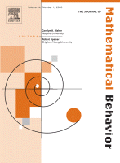
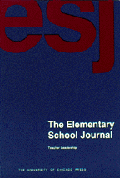
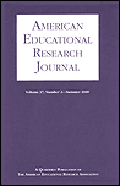
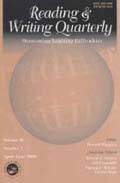
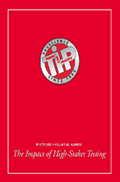
Recent Papers
Kazemi, E., & Lenges, A. Relating professional development in mathematics to the classroom. Unpublished manuscript.
Much professional education with elementary teachers is designed to support them to recognize the mathematical ideas inherent in students’ work and use the diversity of mathematical thinking in the classroom to advance students’ understanding and reasoning. In this study, we present classroom episodes that characterize the diversity of instruction we observed in the classrooms of six teachers who had participated in a substantial amount of professional learning focused on understanding children’s mathematical thinking. We explain the diversity in classroom practice theoretically by viewing the professional development seminars and the classroom as forming distinct communities with their own norms, practices, and tools. Teachers may become full participants in a professional development community in which they have a high degree of support to puzzle over and deliberate students’ mathematical thinking. Yet the classroom, responding to both external and internal goals, with its own practices and tools, may offer different resources for learning and being. What teachers do in any given day in their classroom is a result of heeding many—sometimes contrasting or competing—images of what it means to teach mathematics. The episodes we present in this paper raise a number of questions about characterizing the coherence of instruction and understanding the complex relationship between professional development experiences and classroom practice.
Kazemi, E. (2004, April). The interaction between classroom practice and professional development. In K. McClain (Chair), Articulating effective design principles in professional development: A focus on interactions. Symposium conducted at the annual meeting of the American Educational Research Association, San Diego.
A key component of professional development focused on student reasoning is teachers’ own reports of their efforts to elicit and build on children’s thinking in their own classroom. This paper focuses on the relationship between teachers’ engagement in professional development and their work in their own classrooms. The goal is to understand how teachers engage with new ideas about student reasoning during and after their professional development experiences and how their participation in the professional development and in their classrooms mutually influence each other.
Dutro, E., Kazemi, E., & Balf, R. (in press). Making Sense of “The Boy Who Died”: Tales of a struggling successful writer. Reading and Writing Quarterly.
In the middle of fourth grade, Max wrote a story, “The Boy Who Died,” that described a boy whose struggles in writing led directly to his death. In this manuscript, we present a case study of Max’s experiences in writing, preceding and following that story. In particular, we explore how his classroom writing experiences both shaped and were shaped by aspects of his identity, specifically his sense of himself as a writer, his struggle to communicate his ideas, and his discomfort with expressing private thoughts and emotions in print. Drawing on interviews, observations, and analyses of his work, we examine Max’s experiences with several aspects of the writing curriculum—including writing workshop, journal writing, responding to literature, and a state writing assessment. Our analyses reveal that lying behind Max’s struggles with writing were increasingly sophisticated understandings and applications of writing process and conventions. Yet, amidst increasing success, Max continued to believe that he was a student who struggled with writing. Further, we could not have understood Max’s struggles or successes without a sense of how his “ways of being” in the classroom were impacting what and how he wrote. Max’s story argues for the importance of considering issues of identity in the writing classroom and using the tools of close analysis of student work and one-on-one conversation in order to help students build on the successes that often hide behind the surface struggles of their writing.
Dutro, E., Kazemi, E., Balf, R. (in press).The aftermath of ‘you’re only half’: Multiracial identities in the literacy classroom. Language Arts.
For weeks the children in Ruth’s fourth/fifth grade classroom had been engaged in a literacy project in which children researched and shared an aspect of their cultural background. The children had interviewed their parents, consulted books and the internet, written reports, gathered artifacts, created art projects, and, finally, put it all together in a poster presentation to be shared with peers from other classrooms. In ways that Ruth had not anticipated, the public presentations of the project resulted in feelings of hurt and frustration for her three biracial students as other children questioned their claims to their own racial identities. However, it was also the public presentations of the projects—specifically the issues of multiracial identity that the presentations raised—that transformed the project from a rather straightforward attempt to acknowledge and celebrate diversity into a critical literacy project in which children grappled with the complexities of race and what it means to claim membership in racial categories. In this article we share these children’s experiences and reflect on what it takes to both value multiracial identities and support children in grappling with the complex and important issues of race that those identities raise.
Dutro, E., Kazemi, E., Lin, Y. & Balf, R. (under review). “What are you and where are you from?”: Culturally relevant pedagogy as identity work in a diverse urban classroom. American Educational Research Journal.
In this article we discuss children’s experiences with a project that attempted to enact culturally relevant pedagogy in a highly diverse urban elementary classroom. Although most educators would agree that enacting culturally relevant pedagogy is always a complex process, we have too few examples in the research literature of what that complexity looks like and how it plays out in highly diverse classrooms. Our case study illustrates how culturally relevant pedagogy bumped up against children’s ideas about their own and others’ cultural and racial positionings in a highly diverse classroom where both cultural backgrounds and race varied. Drawing on a range of qualitative data sources, we discuss children’s work and interactions around three themes: the mutual positioning between children and the concept of ‘culture’; issues of legitimacy in claiming identities; and engaging race and racial categories as social constructs. We discuss the implications of this case study for research and teaching and argue that it is vital for teachers and researchers to consider cases such as this if we are to better understand and respond to the complexities of engaging children in issues of culture and race in diverse public school communities.
Kazemi, E. (2002). Exploring test performance in mathematics: The questions children's answers raise. Journal of Mathematical Behavior, 21, 203-224.
This article investigates children's
mathematical performance on test items, specifically multiple-choice
questions. Using interviews with 90 fourth-graders, it reveals why particular
kinds of items are more or less difficult for students. By using multiple
choice questions and juxtaposing them with similar open-ended problems,
the findings underscore the costs of not attending to children's thinking
in designing and interpreting problems. The data from this study suggest
that when answering multiple choice questions, students' attention is
drawn to the choices themselves. They do not necessarily think through
the problem first and thus make their choices based on (often incorrect)
generalizations they have made about problem solving. Whether students
answered a multiple-choice question or a similar open-ended problem
first impacted both their performance and their reasoning. Moreover,
children draw on their life experiences when the context of the problem
is
salient, thus ignoring important parameters of the stated problem. Implications for investigating children's thinking, instruction, and test design are discussed.
Kazemi, E., & Stipek,
D. (2001). Promoting conceptual thinking in four upper-elementary
mathematics classrooms. Elementary School Journal, 102, 59-80.
Informed by theory and research in inquiry-based mathematics, this study examined how classroom practices create a press for conceptual learning. Using videotapes of a lesson on the addition of fractions in 4 primarily low-income classrooms from 3 different schools, we analyzed conversations that create a high or lower press for conceptual thinking. We use examples of interactions from these fourth- and fifth-grade lessons to propose that a high press for conceptual thinking is characterized by the following sociomathematical norms: (a) an explanation consists of a mathematical argument, not simply a procedural description; (b) mathematical thinking involves understanding relations among multiple strategies; (c) errors provide opportunities to reconceptualize a problem, explore contradictions in solutions, and pursue alternative strategies; and (d) collaborative work involves individual accountability and reaching consensus through mathematical argumentation.
Franke, M.L., & Kazemi, E. (2001). Learning to teach mathematics: Developing a focus on students' mathematical thinking. Theory into Practice, 40, 102-109.
The field of mathematics education has made great strides in developing theories and research-based evidence about how to teach elementary school mathematics in a way that develops students' mathematical understanding. Much of this progress has grown out of research projects that engage teachers in learning to teach mathematics. These projects have not only shown what is possible for teachers and students but have also provided insight into how to support teachers in their own learning. We use one particular research and development project, Cognitively Guided Instruction (CGI), as an illustration of how theory and research inform the teaching and learning of mathematics.
Franke, M.L., & Kazemi, E. (2001). Teaching as learning within a community of practice: Characterizing generative growth. In T. Wood, B. Nelson, & J. Warfield (Eds.). Beyond classical pedagogy in elementary mathematics: The nature of facilitative teaching (pp. 47-74). Mahwah, NJ: Erlbaum.
Teaching as learning is a simple concept yet one that is potentially overused and little understood. Understanding teaching as learning and how it manifests itself in teachers' professional lives provides a basis for characterizing the teaching of mathematics. Drawing from our prior research and our ongoing work with teachers we believe that the teachers whose students learn the most mathematics are those who engage in practical inquiry. We describe those teachers as engaged in 'generative growth' (Franke, Carpenter, Levi & Fennema, in press; Franke, Fennema, Carpenter, Ansell & Behrend, 1998). Not only do teachers engaged in generative growth learn in the context of their classrooms, but they also create communities of learners for themselves that include their students and colleagues. Although we may believe that we can identify these teachers, we have yet to articulate what it looks like for generative teachers to learn in the context of their ongoing practice. Although we have been interested in teachers' professional communities in our work with Cognitively Guided Instruction (CGI) , we have to this point, focused more on the cognitive aspects of teacher learning. This chapter builds on the existing notions of generativity but frames them such that teacher learning is seen as a community activity. Our intent is to provide a way of thinking about generativity that accounts for how teacher learning occurs within sites of practice that include classrooms and professional communities. We draw from our previous work, our current research and the perspectives of those in the field writing about learning within communities of practice.